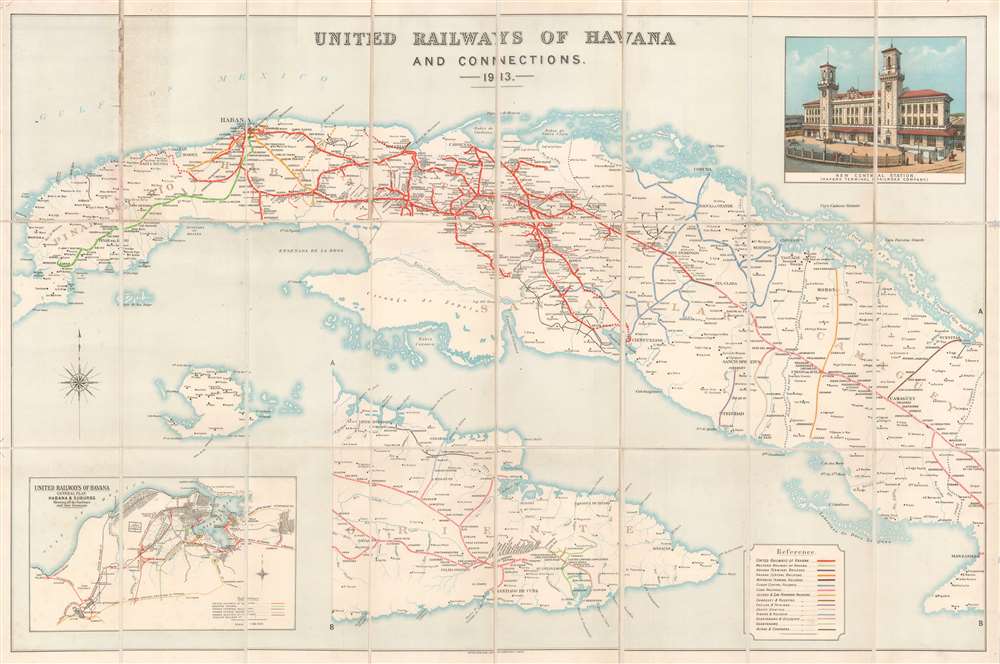1913 Waterlow Railroad Map of Cuba
RailwaysofHavana-waterlow-1913
Title
1913 (dated) 26.5 x 40 in (67.31 x 101.6 cm) 1 : 550000
Description
The United Railways of Havana
Following the American Intervention in Cuba after the Spanish-American War, the United Railways of Havana passed into British hands. The London-based board passed marching orders onto operational managers in Cuba. When Cuban railroads consolidated in the early 20th century, only the rival United Railways of Havana and the Cuba Railroad Company remained. Their rivalry lasted through the 1950s, until Castro nationalized the railroads in 1960.Publication History and Census
This map was created and published by Waterlow and Sons in 1913. Only one example is catalogued in the OCLC, associated with the National Library of Wales. We are aware of one further example in private hands.Cartographer
Waterlow and Sons (1810 - 1961) was a British engraving and printing concern active in London specializing in currency, postage stamps, bond certificates, and occasionally maps. The firm was founded by James Waterlow (1790 - 1876) in 1810 on Birchin Lane, London, as a legal document printer and copyist. By 1852, they had expanded into stamps and his sons, Albert, Alfred, Sydney, and Walter joined the business. One year after James Waterlow's death, in 1877, infighting among the sons led Alfred Waterlow to split off, forming Waterlow Brothers and Layton. The rift was settled by 1920, and the two firms once again merged under the Waterlow and Sons imprint. They were involved in the Portuguese Bank Note Affair of 1925, wherein the Portuguese fraudster Artur Virgílio Alves Reis convinced the firm to print 200,000 banknotes of 500 Portuguese Escudos each, amounting to roughly 88% of Portugal's GDP. The affair was settled in court with a ruling against Waterlow. In 1928, Waterlow lost its most lucrative contract, printing English banknotes, and began to fall into decline. In 1961, they were acquired by Purnell and Sons who, shortly afterwards, sold the firm to De La Rue. Ironically, De La Rue acquired the contract to print Bank of England banknotes again in 2003 – 75 years after Waterlow lost it! More by this mapmaker...

